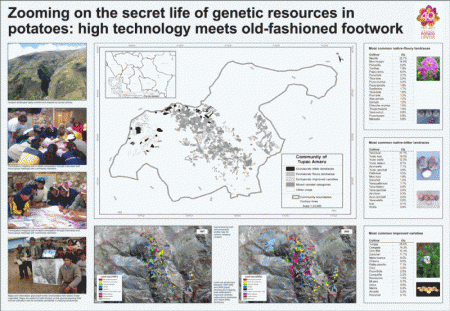And speaking of genetic erosion:
Land use tendencies between 1997 and 2005 shows that the total cropping area dedicated to improved cultivars has grown fast while the area reserved for native-floury and native-bitter landrace has remained more or less stable. Reduced fallow periods for existing fields and the gradual incorporating of high-altitude virgin pasture lands sustain areal growth. While areas of improved cultivars are proportionally growing fastest at extremely high altitudes between 3,900 and 4,350 m of altitude, overall cropping intensity or fallowing rates are inversely related to altitude. No evidence of a straightforward replacement of one cultivar category by another was found.
That’s from the winners of the third prize at the SCGIS/ESRI/SCB International Conservation Mapping Contest, Traditional Cartography section: CIP’s Henry Saul Juarez Soto, with Franklin Plasencia and Stef de Haan. Worth reading the whole thing.
